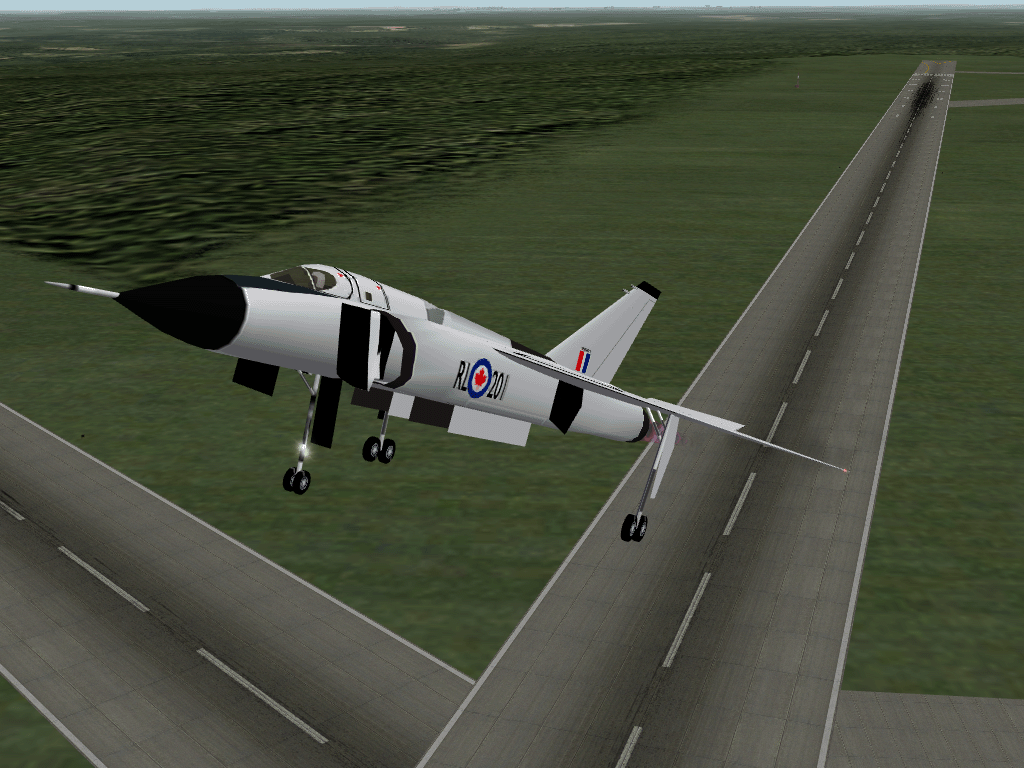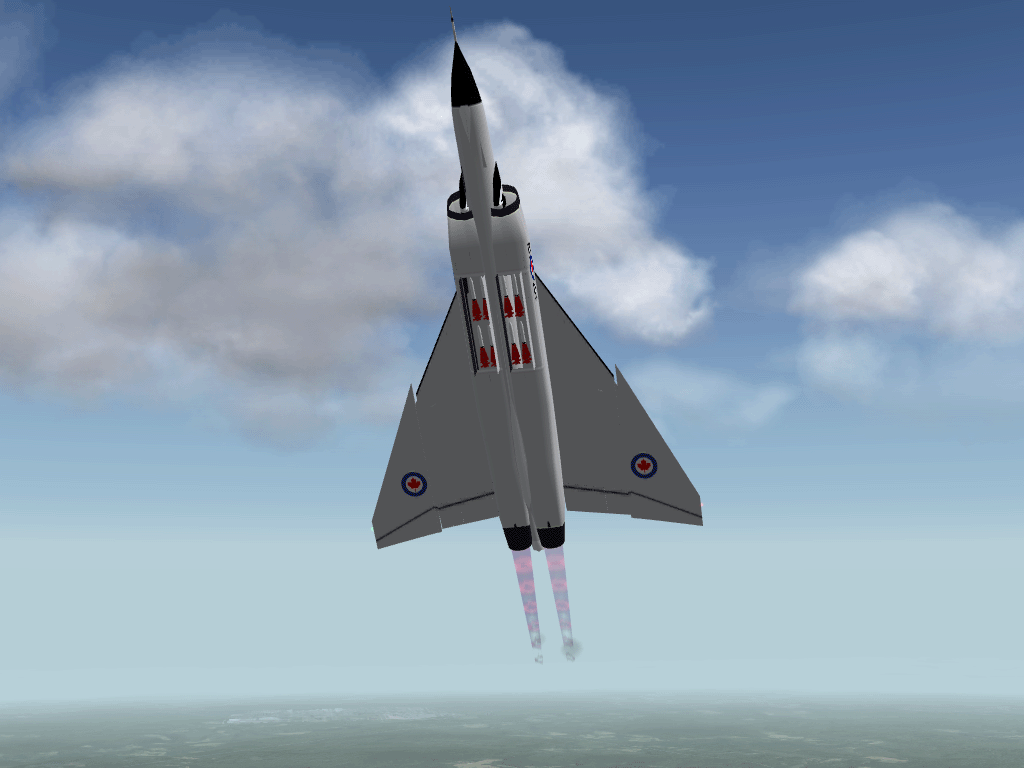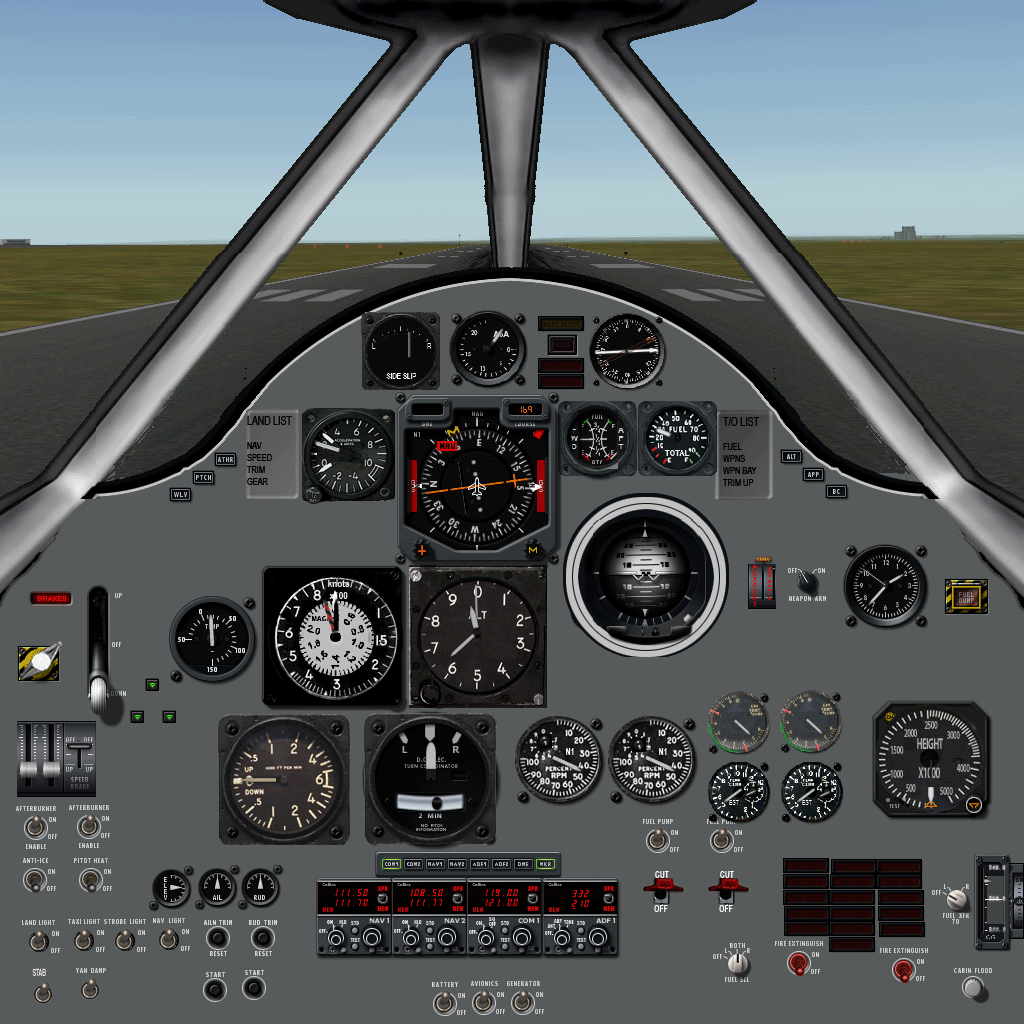Features
3D cockpit view matches forward view at standard resolution.
Instruments as accurate as possible using information available (many thanks to Jacques Brault for diagram).
opening weapons bay doors revealing 8 falcon air-to-air missiles
Avro Canada CF-105 Arrow Mk 1
Designed to the demanding specifications of intercepting soviet bombers over the hostile environment of Canada's frozen North, the Arrow was a large, all-weather, two-seat, delta-winged, twin-engined high-altitude supersonic interceptor. Eventually to be capable of flying at Mach 2.5 at 50,000 feet with a range of 600 nm. The Mk 1 was powered by P&W J75 engines (12,500 lbs dry, 18,500 wet) and five flew in this configuration. The Mk 2 had the more powerful Canadian-built Orenda PS-13 Iroquois engines (19,250 lb dry, 26,000 lb wet), one of which was built but never flew. The Mk 3 would have retained these but with variable (possibly forward-swept) intakes and would have been armed with an all-missile weapons system.
This represents RL-201, the first Mk1 to fly. I armed it with Hughes Falcon missiles in a weapons bay larger than that of a B-29, featuring opening doors. These missiles were considered first (although I suspect the bigger more powerful supersonic variety would have been used) before Sparrow II's were adopted.
The weapons system proved to be the Achilles heel of the whole program, eventually being the nail in the coffin when too much money had been spent and the whole thing was cancelled suddenly one Friday. This has of course led to lots of controversy and conspiracy theories abound. What's worse is that all the Arrows (except for a nose section) were broken up and destroyed. At the time the Canadians had an order for the British-built TSR2, which unfortunately met the same fate. Although the Arrow was the most advanced aircraft of its type anywhere in the world, it was allowed to die.
Handling is typical of a delta-winged aircraft, with no real stall to speak of. AoA is limited by handling characteristics and landing AoA by the attitude required. Be prepared for high nose-up attitudes on landing. I've modeled the panel carefully on the best drawings and descriptions of the real thing that I could find. I've included a few extras at the bottom which were never included, particularly the radar altimeter which can be useful. A crude but effective 3D cockpit is also part of the x-plane.
The best places to go for internet information on the Arrow are:
http://www.exn.ca/flight/avro_arrow/
http://www.vectorsite.net/avarrow.html
http://www.avro-arrow.org



